
Security on The Dreamboat — better known as a massive Celebrity Cruises oceanliner hired by San Francisco enterprise tech company Salesforce and docked in San Francisco's Pier 27 as part of Dreamforce, the company's annual conference — is, in a word, tight. To enter the boat, you first go to a desk and pick up your conference badge. Next, you go to an adjacent desk and check in for the appropriate party. Once you get a wristband, you can proceed to a bank of computers, where you type in your name, company affiliation, country of origin, and a state-issued ID number. It's only after that when you can head to the second floor of the cement cruise terminal, which is where actual security begins. (If you get confused along the way, Salesforce workers wearing ocean-blue T-shirts that say "Sea me for help" are plentifully scattered along your path.)
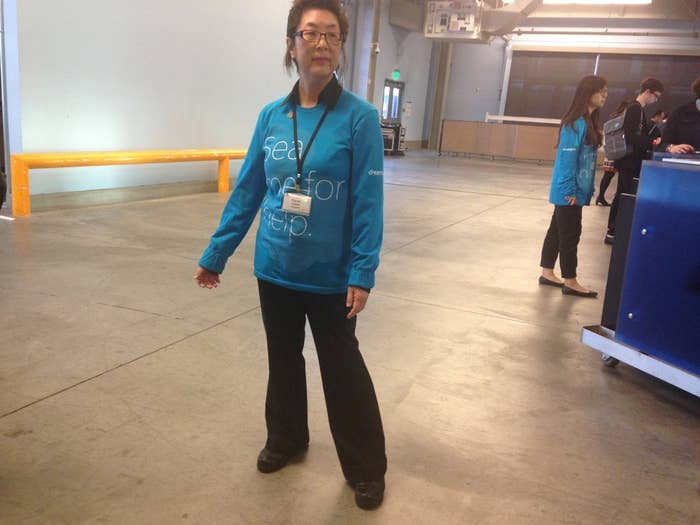
At the top of the escalators, security officials check for wristbands before waving you on to the metal detectors. Pass through these, and you're on to the gangway. Here, the mood lightens — there's a bar, and more fun nautical-themed decorations, including a giant photo backdrop that reads "Work like a captain, party like a pirate."
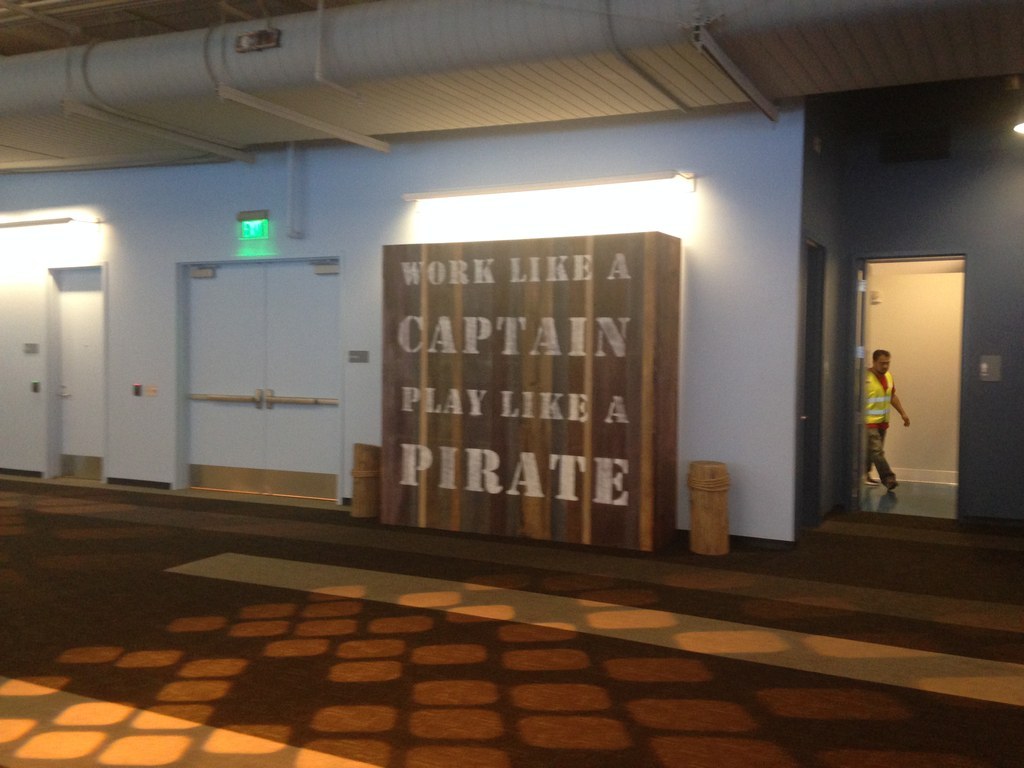
This is your last stop before actually boarding the boat. Handsome sailor types in spiffy blue uniforms are everywhere, smiling and saying, "Welcome to the Dreamboat." Everything is Caribbean teal — or is it tech-company blue? — and white; through the floor-to-ceiling glass windows, the hull of the Dreamboat looms large with its rows of portholes and cabin balconies. All you have to do is hand over a government ID and a crew member will print you out a second badge; this one will allow you to stay on the Dreamboat until 1 a.m. Try to stay later and the cabin crew will get involved, I am told.
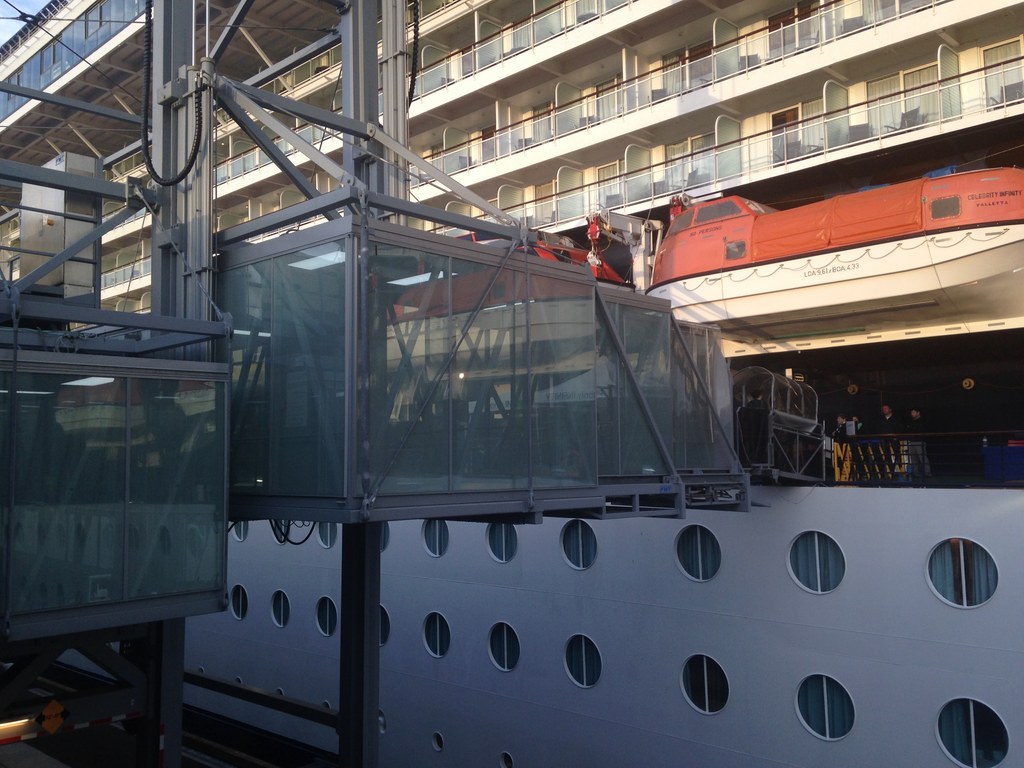
Then it's back out into the open, down the gangway, and, finally, onto the ship — after a short stop to have your photo taken and your boat badge scanned, should you go missing in the night. From there, the Dreamboat is pretty much your oyster, as long as you have the right wristband.
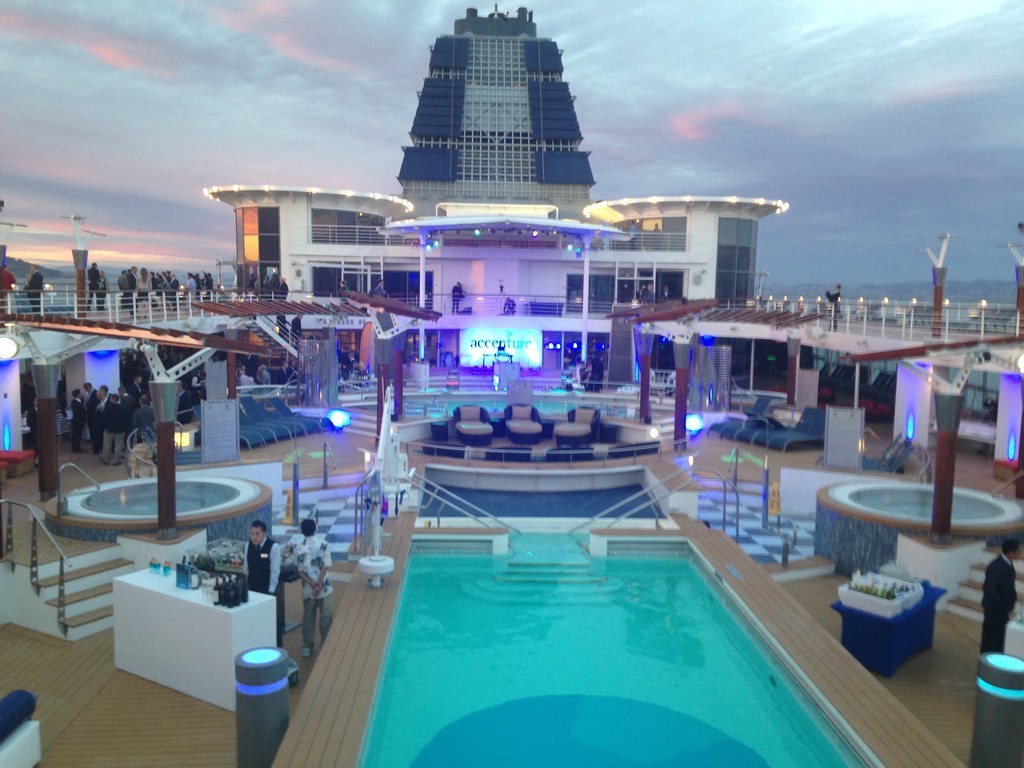
The Dreamboat exists because so many people come to San Francisco for Salesforce's annual weeklong Dreamforce conference that the city literally runs out of hotel rooms to put them in. This year, 170,000 people attended Dreamforce; fewer than 900,000 people actually live in San Francisco year-round. The boat is also a central location for Dreamforce's many receptions, parties, meetings, and entertainment events, including karaoke and live bands. In a way, the Dreamboat is a necessity, about as practical as a luxury cruise liner could ever hope to be.
But look at it another way and the boat is also a symbol for some of the indulgence and showmanship that the San Francisco tech industry has, over the last few years, become known for, at least to some. In some circles, 2015's Dreamforce may well be remembered as the year a startup literally shot cannons full of cash off in the streets. The Dreamboat is, more or less literally, a celebration of financial success, not just for Salesforce but for the thousands of companies that use Salesforce technology to make more money every day. It's the boat that tech built — or rather, rented.
What's unique, though, about this particular fête is that typically, such self-congratulation in the tech world is paired to a company's glorious vision for the future of the human race. But Salesforce is a 16-year-old company that sells a cloud-based platform for doing better business; unlike other Bay Area tech companies known for their gaudy amenities and flashy parties, Salesforce isn't selling any kind of utopian plan. Facebook wants to connect the world; Google wants to revolutionize information without doing evil. Salesforce just wants to do business.
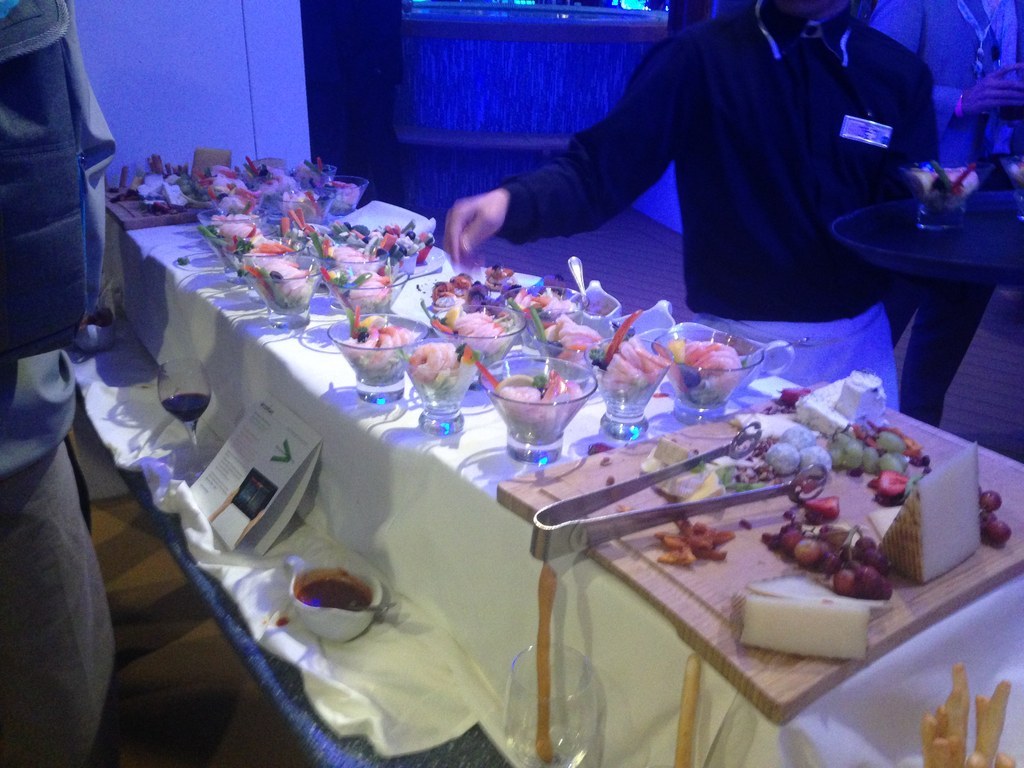
The press party was on deck 11, in a swanky sort of a restaurant space called Qsine. The room was dimly lit; the cocktails, served in martini glasses, were bright blue and green and very sweet; the DJ played Oasis's "Wonderwall." Servers offered plates of shrimp and egg rolls; a buffet table offered chocolate-covered strawberries. When the sun set over the San Francisco Bay, the room was flooded with a golden light. Journalists, many of whom had flown in from other countries to attend Salesforce, chattered in small groups; few, if any, talked about the conference.
There were other parties happening simultaneously throughout the ship. On deck 10, Salesforce customers wearing business-casual uniforms huddled against the wind and drank beer. Most of them had dinners to go to elsewhere afterward. The vibe was typical of any networking happy hour, except that we were on a boat, and it was freezing and windy. People took a lot of pictures of the sunset. A cruise ship employee manned the barrier at the top of the stairs told members of the press party above that he'd been asked to keep the groups separate.
Eventually, though, I managed to evade security and made it to deck 10, where I spoke with a businessman from San Diego. He told me he'd been using Salesforce for over a decade at various jobs, and attending Dreamforce for almost as long. The conference, he said, is a chance to talk with the Salesforce representative that works with your company, and learn more about what Salesforce technology makes possible. Every year, he said, the offerings are a little more comprehensive, and the party a little more glitzy.
I continued to explore. The main decks were considerably warmer, open to everyone, and filled with standard cruise-ship fare — a live band playing covers, an espresso bar, two women splitting a bottle of champagne, a martini bar made of ice.
On deck three, in the SS United States Lounge — which, with its white linen and a row of round windows that could only be described as stately — there was a party for industry analysts. Analysts mostly work for themselves, collecting information from a variety of customers in a given industry, drawing some conclusions and predictions from that information, and then feeding it back to the clients, and, unlike the rest of the tech crowd, they mostly wear sensible blue suits and loafers. They don't so much use Salesforce as they use Salesforce's customer base for information. Dreamforce is a chance for them to to talk with clients and learn about trends in the industry, but before I could ask what they'd learned so far, a Salesforce representative swooped in and told me it was time to go back to the press party, where I belonged. When I asked how I was found out, I was only told that they "have their ways."
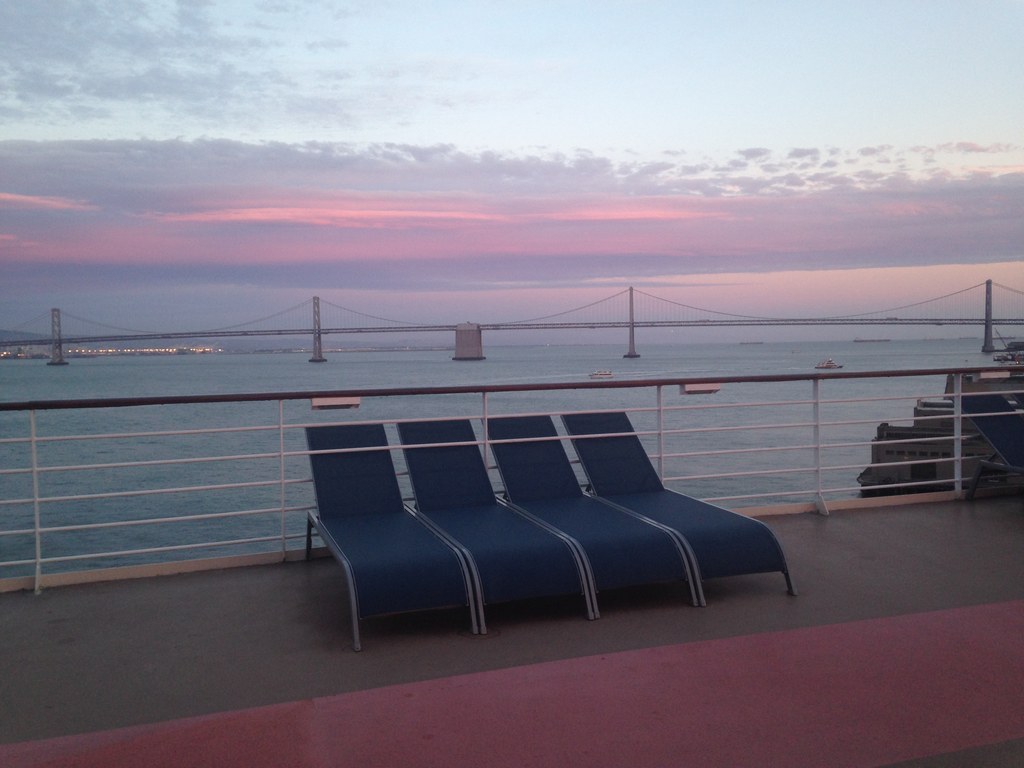
Salesforce is not an exciting company. Dreamforce is not — boat aside — an exciting conference. It's enormous because lots and lots of people use the company's software — more every day as Salesforce expands its capacity by building new products and, more typically, acquiring new companies. But unlike the big companies that San Francisco is known for — your Apple, your Twitter— Salesforce isn't focused on building consumer products, or technology for people at leisure. Salesforce builds tech products for people who are at work — and work, for the majority of people, tends to be pretty boring.
When you ask people what Salesforce is, they'll typically tell you it's a CRM company. CRM stands for customer relationship management, which basically means, in the words of a banker I met on the boat, it's a "glorified Rolodex." Technically, that's true. But these days, Salesforce does a whole lot more than CRM — it does customer support, marketing, custom apps, and more. It's even designed software to help mayoral offices run cities more efficiently. CRM, someone told me, is basically a gateway drug that gets businesses on the Salesforce platform; after that, the company relies on its fun, community-oriented reputation to keep customers loyal. Dreamforce is a celebration of that community; it's to Salesforce customers what the Gathering is to Juggalos.
That's great for the people who attend Dreamforce — or at least, it seemed like they were having a lot of fun. But the conference also has a pretty overwhelming impact on the city of San Francisco. You can't attend an event in the city without having a conversation about how Dreamforce-related traffic made someone, if not everyone, late. WIth hotels full, Airbnbs near the conference center have jacked prices up to $1,000 a night. Lyft cars, which normally come in a few minutes, can take 25 minutes or longer to arrive. Coffee-shop lines are twice as long as usual. Buses, billboards, taxis, and even T-shirt-wearing humans are slathered with Dreamforce-related slogans and company names. But it's not like everyone in the city gets to party on the boat — only those invited to the party do.
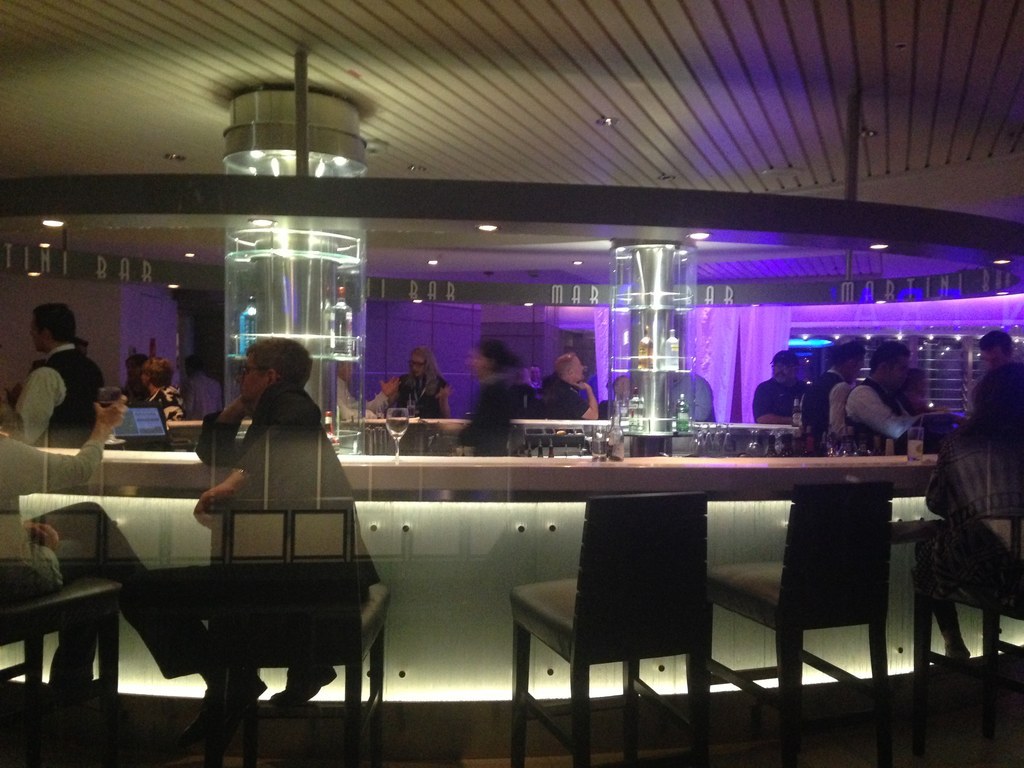
Being on a boat is exciting — or at least it was for me — because recreational boats are status symbols; for the most part, only wealthy elites have access to them. No matter how fancy a boat — or in this case, a cruise ship — is, there's still an element of excitement simply because it's a vessel floating on water. This feeling is perhaps best crystallized in the 2009 digital short "I'm On a Boat," by The Lonely Island, featuring T-Pain, as seen on Saturday Night Live. For those with short memories, the video is below, but suffice it to say the song celebrates the freewheeling excitement and sense of promise that maritime travel begets.
This song came up in conversation multiple times during my time on the Dreamboat. At one point, a journalist expressed a desire to hear drunk salespeople singing it. Later, a very nice and not-at-all-drunk University of Hartford employee brought it up while waiting in line for a drink at the martini bar, saying she couldn't stop thinking about the song as she party-hopped around the Dreamboat with her mother (who sported long gray hair and exercise pants), who had come along for the ride all the way from Connecticut.
The daughter just started her job at the university, and was excited not only to be on a boat, but to learn more about how Salesforce can be used to manage clients. She said she appreciated that the Salesforce platform was as applicable to nonprofits as it is to the big companies whose representatives' faces hung smilingly on banners on Dreamboat's walls. It's their money, she reasoned, that paid for the Dreamboat, and she was just happy to be there.
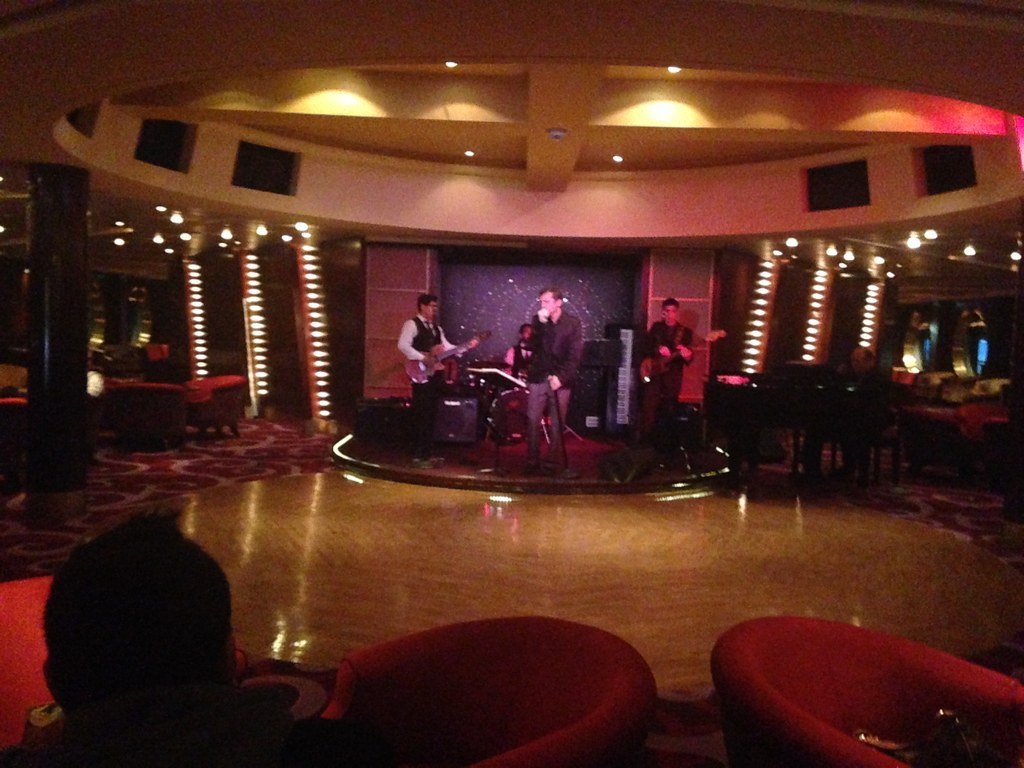
The last party of the Dreamboat that I went to was hosted by Fujitsu, a major Japanese IT company. It had a band, and an open bar, and not much else; I got a McDonald's corporate employee to walk me in. This party took place in the bow of the Dreamboat, in a ballroom with walls made entirely of glass, which allowed partygoers a sparkling view of the Embarcadero, and Telegraph Hill behind it. The McDonald's employee and I each drained a Dewar's as we watched increasingly drunk businessmen in suits dance to covers of oldies. It felt a lot like a wedding.
On my way out, I stopped to chat with one of the waiters, and asked if he was having a nice time. He said it was a typical cruise ship party. It's not typical, though, for a cruise ship to dawdle in a single harbor for this long; I asked if he planned to go ashore. He told me that, originally, the crew had been told they could visit San Francisco, but then later, their passes to leave the boat had been taken away. Another crew member said that management blamed the city, while the city blamed management. Either way, it seems that, while Dreamforcers might be working like captains and partying like pirates, the people working aboard the Dreamboat would be working like crew members and partying like crew members — on board the ship.
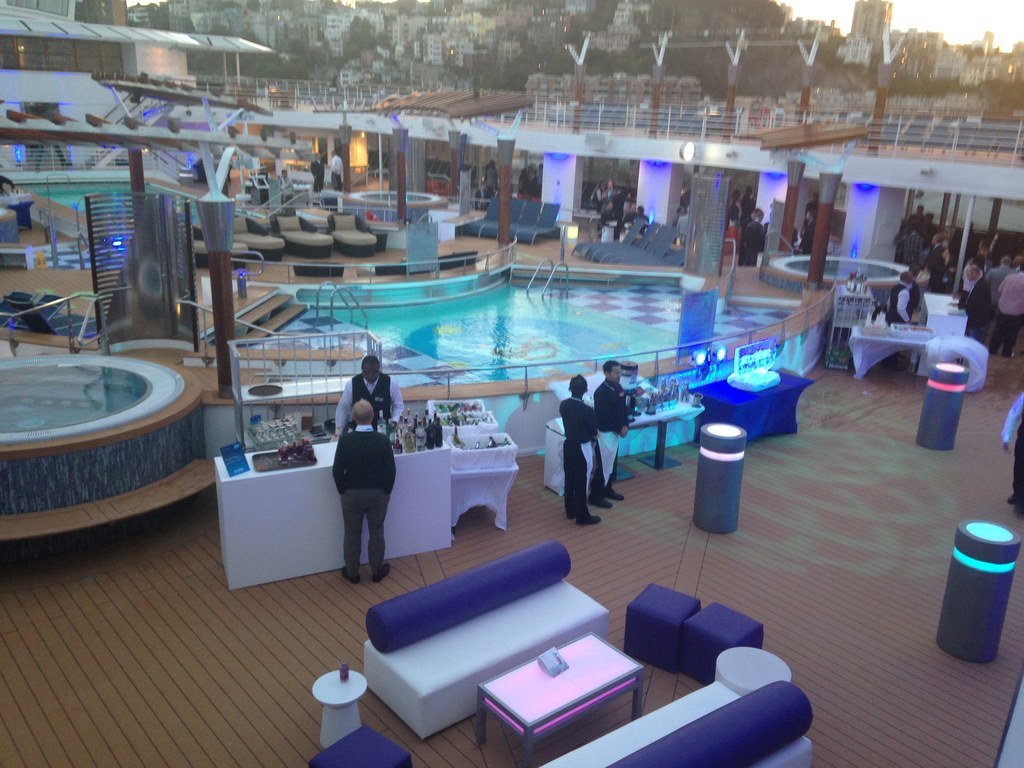
The thousands of people who work for Salesforce and the many thousands more who work for companies that use Salesforce have every right to celebrate the work that they do. At a recent panel on the future of work, Asana's head of business Kenny Van Zant pointed out that, in San Francisco, it's easy to forget that most people's jobs aren't about high-minded ideals and reinventing the world. Most jobs are just jobs; if Salesforce wants to reward the people who do them with a big old party every year, power to them.
But while we're drinking glowing blue cocktails on the deck of a cruise liner in the name of innovative business practices, it's worth remembering that the people who washed the deck and mixed the cocktails are doing important jobs, too. San Francisco as a city hasn't hesitated to celebrate its success in recent years, but a five-day-long booze cruise might be one of the showiest, most brazen nods to the population's ever-increasing and increasingly unevenly dispersed wealth yet.
As I left the last party, I tried to foist my unfinished Scotch on a crew member. She declined, firmly stating that she wasn't allowed and would probably be fired if she touched it. So I said farewell and made my way out of the Constellation Lounge, back across the main deck, down the glass elevator, past the martini bar, onto the gangway, down the escalator and out into the night, where I joined the throngs of other partygoers waiting for Ubers home.
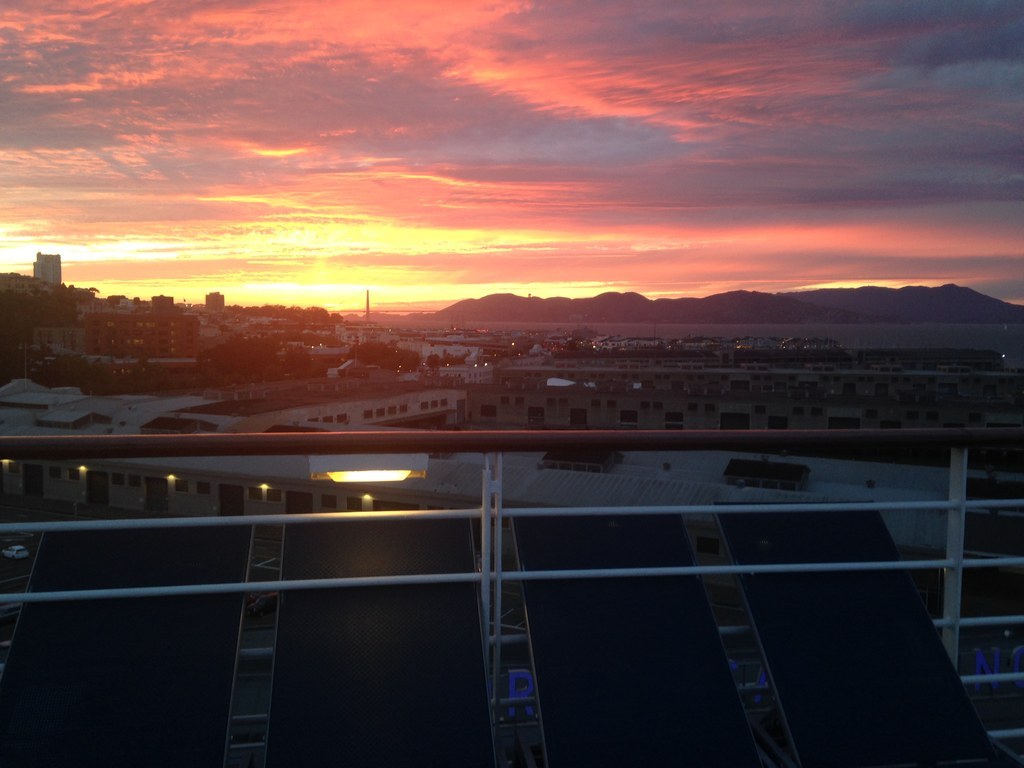
Correction
There were 170,000 people who attended Dreamforce in 2015. A previous version of this article misstated this number.

